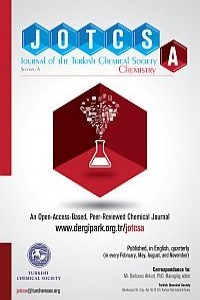Bioactivity of Phaeophytin a, α-Amyrin and lupeol from Brachystelma togoense Schltr
Bioactivity of Phaeophytin a, α-Amyrin and lupeol from Brachystelma togoense Schltr
Phaeophytin a, α-amyrin and lupeol isolated from Brachystelma togoense were screened against S. aureus, E. coli, S. pneumonia, S. typhi, and C. albicans using Ciprofloxacin and Terbinafine as standards. The result showed that these phytochemicals displayed antimicrobial activity against the tested organisms with the zone of inhibition from 12 – 27 mm. The result of MIC showed that Phaeophytin a was most active against C. albicans (0.09 mg/ml). The MBC showed that phaeophytin a and lupeol were the most active against S. aureus, S. pneumonia and S. typhi (0.37 mg/ml). The result of MFC showed that phaeophytin a was most active against C. albicans (0.1875 mg/ml). The activity of these phytoconstituents in B. togoense justified ethnomedicinal uses of the plant.
Keywords:
Bioactivity, Phaeophytin a, α-amyrin and lupeol,
___
- 1. Höfling J, Anibal PC, Obando-Pereda G, A T Peixoto I, Furletti VF, Foglio M, et al. Antimicrobial potential of some plant extracts against Candida species. Brazilian Journal of Biology [Internet]. 2010;70:1065–8. Available from: http://www.scielo.br/pdf/bjb/v70n4/a22v70n4.pdf
- 2. Yuan H, Ma Q, Ye L, Piao G. The Traditional Medicine and Modern Medicine from Natural Products. Molecules. 2016;21(229):1–3.
- 3. Jamshidi-kia F, Lorigooini Z, Amini-khoei H. Medicinal plants : Past history and future perspective. Journal of Herbmed Pharmacology. 2018;7(1):1–7.
- 4. Dar RA, Shahnawaz M, Qazi PH. General overview of medicinal plants : A review. The Journal of Phytopharmacology. 2017;6(6):349–51.
- 5. Bruyns P V. Three New Species of Brachystelma (Apocynaceae, Asclepiadoideae, Ceropegieae) from South Tropical and Southern Africa. Vol. 19. SPIE; 2009. 5 p.
- 6. Ollerton J, Masinde S, Meve U, Picker M, Whittington A. Fly pollination in Ceropegia (Apocynaceae: Asclepiadoideae): biogeographic and phylogenetic perspectives. Annals of Botany. 2009;103(9):1501–14.
- 7. Britto SJ, Bruyns P V. Three new species of Brachystelma from Tamil Nadu, India. Haseltonia. 2016;(22):48–54.
- 8. Kew Royal Botanical Gardens. Electronic Plant Information Centre (ePIC) [Internet]. 2019 [cited 2019 Feb 7]. Available from: http://epic.kew.org/index.htm
- 9. Prasad K, Prasanna P V., Meve U, Rao MS, Thulasaiah T. Brachystelma annamacharyae sp. nov. (Apocynaceae) from the Seshachalam hills of Andhra Pradesh (India). Nordic Journal of Botany. 2016;34(3):360–3.
- 10. Ekalu A, Ayo RG, Habila JD, Hamisu I. Phaeophytin and Triterpenoids from Brachystelma togoense Schltr , a Nigerian Medicinal Herb. Asian Journal of Chemical Sciences. 2019;6(1):1–5.
- 11. Niaz SI, Zhang P, Shen H, Li J, Chen B, Chen S, et al. Two new isochromane derivatives penisochromanes A and B from ascidian-derived fungus Penicillium sp. 4829. Natural Product Research [Internet]. 2018;6419(May):1–7. Available from: https://doi.org/10.1080/14786419.2018.1470173
- 12. CLSI. Testing, Clinical and Laboratory Standards Institute,32. 27 th. 2017.
- 13. Gallo M, Miranda bullet, Sarachine J. Biological activities of lupeol. In: International Journal of Biomedical and Pharmaceutical Sciences. 2009. p. 46–66.
- 14. Gomes RA, Teles YCF, Pereira F de O, Rodrigues LA de S, Lima E de O, Agra M de F, et al. Phytoconstituents from Sidastrum micranthum (A. St.-Hil.) Fryxell (Malvaceae) and antimicrobial activity of pheophytin a. Brazilian Journal of Pharmaceutical Sciences [Internet]. 2015;51:861–7. Available from: http://www.scielo.br/scielo.php?script=sci_arttext&pid=S1984-82502015000400861&nrm=iso
- 15. Yen KH, Nyokat N, Kutoi CJ, Hamzah AS, Lim IF. Chemical Constituents of Artocarpus odoratissimus from Sarawak. 2017;7(08):137–41.
- 16. Johann S, Soldi C, Lyon JP, Pizzolatti MG, Resende MA. Antifungal activity of the amyrin derivatives and in vitro inhibition of Candida albicans adhesion to human epithelial cells. 2007;45:148–53.
- 17. Keawsa-ard S, Liawruangrath B, Kongtaweelert S. Bioactive Compounds from Mesua ferrea Stems. 2015;42(1):185–95.
- 18. Díaz-ruiz G, Hernández-vázquez L, Luna H, Wacher-rodarte MC, Navarro-ocaña A. Growth Inhibition of Streptococcus from the Oral Cavity by α-Amyrin Esters. 2012;(Figure 1):12603–11.
- 19. Kiplimo JJ, Koorbanally NA, Chenia H. Triterpenoids from Vernonia auriculifera Hiern exhibit antimicrobial activity. 2011;5(8):1150–6.
- Başlangıç: 2014
- Yayıncı: Türkiye Kimya Derneği
